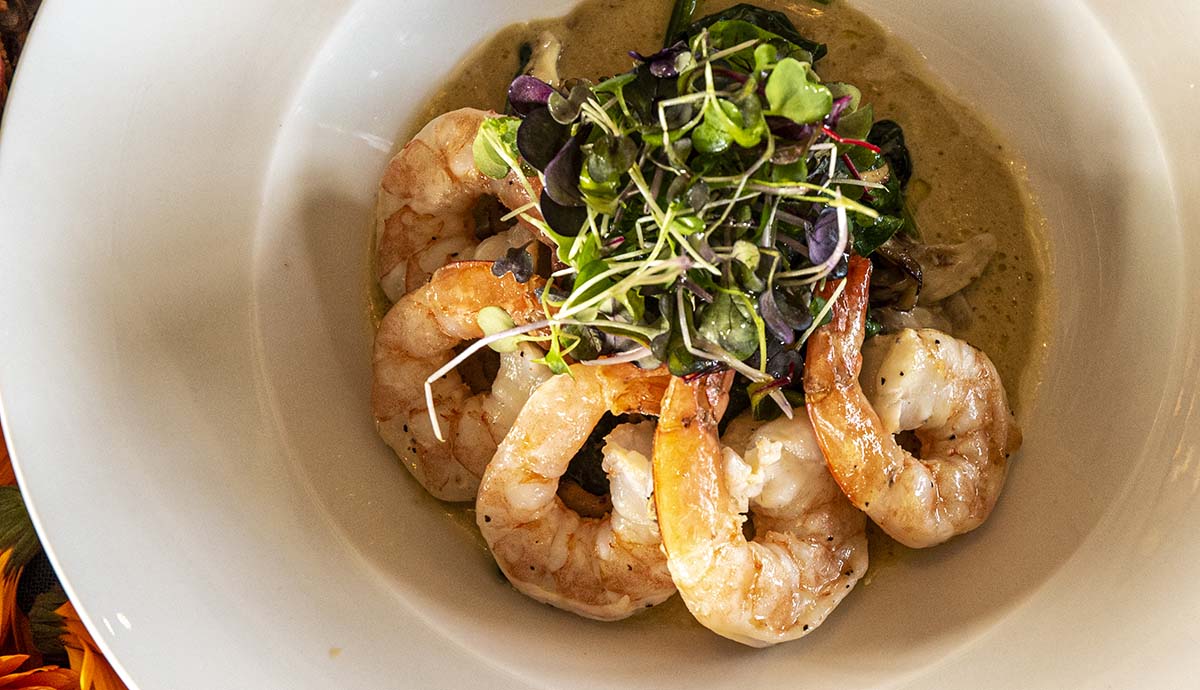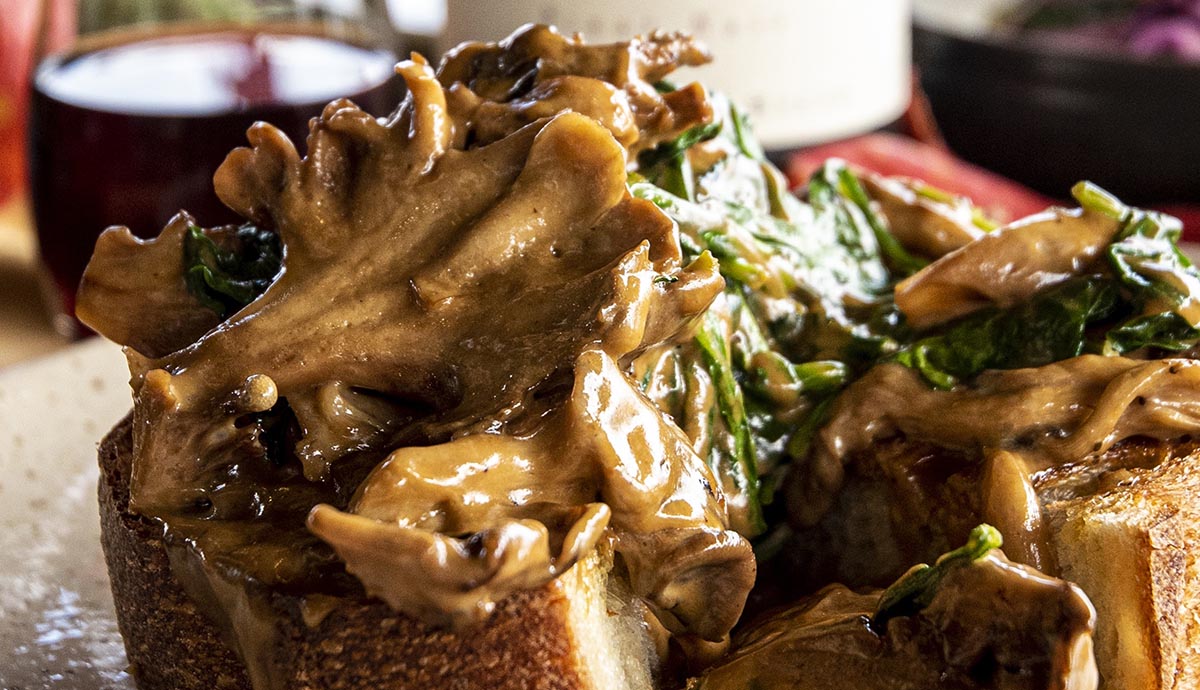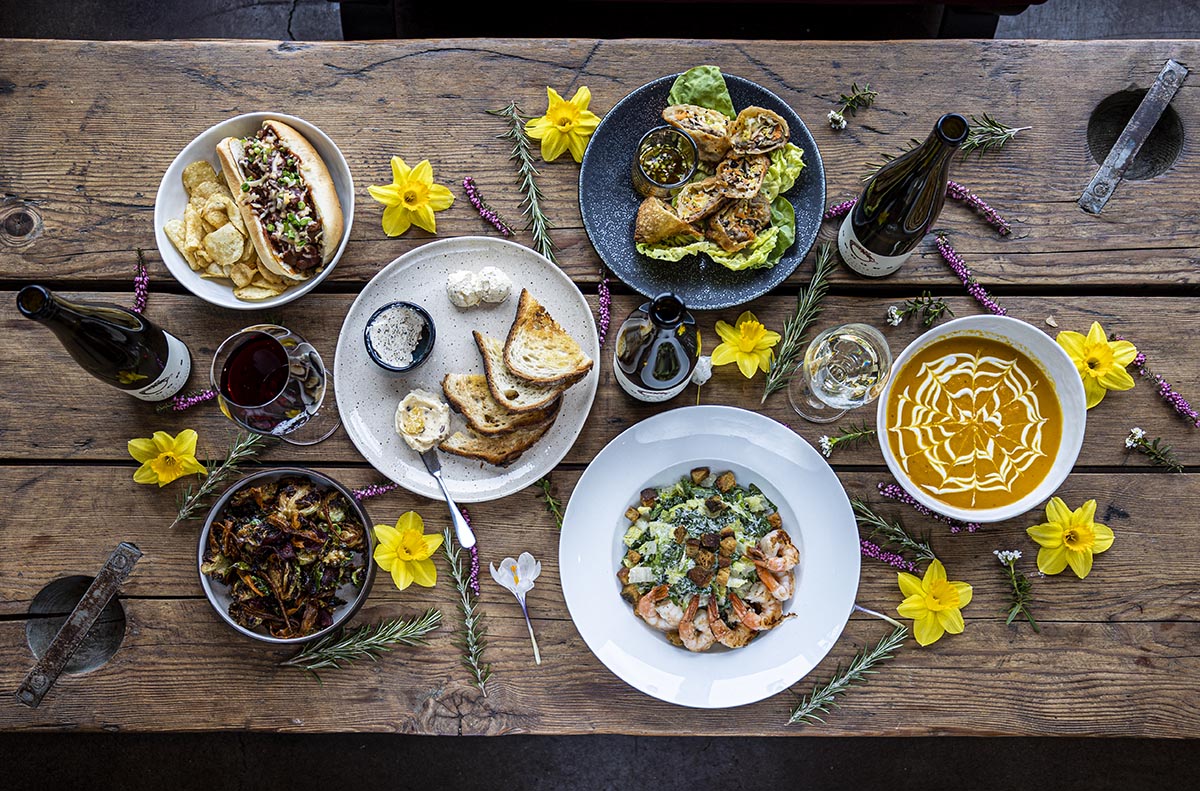Pairing wine with food can seem daunting, but it doesn’t have to be! Learning just a few basic food and wine pairing principles can elevate your dining experience to a new level. Pairing the right wine with a dish can enhance the flavors of the food and the wine, creating a harmonious and unforgettable meal.
Let’s explore the basics:
Match Intensity
One of the most important things to consider when pairing wine with food is the intensity of the wine and the food. Light-bodied wines like Pinot Noir pair well with lighter dishes like salmon or duck. On the other hand, full-bodied wines, such as Cabernet Sauvignon, pair well with heavier dishes like steak or hearty stews.
Consider Acidity
Another key factor in food and wine pairing is acidity. Always ensure that the wine’s acidity matches or is greater than the acidity in the dish. A dish with high acidity, such as a seafood dish with lemon, pairs well with a high-acid wine like Riesling.

Butter Poached Colossal Shrimp in a Lemon Cream Sauce
Paired with the 2019 Hyland Riesling
Think About Flavor
When pairing wine with food, it’s essential to consider the flavor profile of the wine and the dish. Once flavor profiles have been identified, decide if you’d like to create a congruent or contrasting pairing.
Congruent Pairings: In a congruent pairing, the flavors in the food and the wine are similar, creating a harmonious and cohesive dining experience. In other words, the wine and the food have similar flavor profiles, such as both having notes of lemon or smoke. For example, a Pinot Gris with citrus notes paired with a citrus vinaigrette or a Pinot Noir with earthy, mushroom notes paired with a mushroom dish.

Trio of Wild Mushrooms Sandwich
Paired with the 2019 Brooks Muska Pinot Noir
Contrasting Pairings: A contrasting pairing is when the flavors of the wine and food are different, creating a contrast in flavors. In this type of pairing, the wine and food have different flavor profiles, such as a high-acidity Sparkling Riesling paired with fried chicken or a sweet Riesling paired with spicy Thai food. The contrasting flavors can enhance each other and create a unique and exciting pairing.
Understanding the difference between congruent and contrasting wine and food pairing can help you choose the right pairing for your meal. Whether you prefer a harmonious and balanced taste experience or an exciting and contrasting one, experimenting with different pairings can elevate your dining experience to new heights.
Experiment and Have Fun
Pairing food and wine is a subjective experience, and what works for one person may not work for another. Once you get comfortable with traditional pairings, don’t be afraid to experiment with different wine and food combinations to find what works best for your palate. You may be surprised at what unexpected pairings become your favorites!
Ultimately, the best way to learn about food and wine pairing is to experiment and have fun. Try different combinations and see what works for your palate. Don’t be afraid to break the rules and try something new – you might discover a delicious pairing you would never have thought of before. Happy pairing!
Need help identifying the key elements in wine? Check out our blog, How to Taste Wine: An Exercise to Sharpen Your Palate.
